Imagine if Gucci suddenly dropped the price of its handbags. Instead of charging $35,000 for this crocodile handbag…

…what if it suddenly went on sale for $75?
Or if the more reasonably priced $4,500 plastic Mickey Mouse bag…

…abruptly dropped to $10?
How would that change your perception of this nearly 100-year-old Italian luxury brand?
My guess is that if all of Gucci’s prices dropped and it began to market itself as on par with Target, the original target audience — celebrities, fashion icons, and regular-old super-wealthy people — would be flabbergasted.
They might even completely lose trust in the brand and start doubting the quality of its products.
Especially if Louis Vuitton, Chanel, Dior, Burberry, and other luxury brands kept selling luxury, high-priced goods and delivering edgy new styles on the runway.
This concept is market positioning in a nutshell. At its heart, market positioning is the way that a brand comes across to its target market — especially in relation to competitors.
When you establish your brand, you’ll want to know what your market positioning strategy is. How do you want your customers to view your brand? How will it compare to competitors?
In this guide, you’ll learn how to establish and maintain a strong position in your target market throughout the life of your business.
How to create an effective market positioning strategy
The best thing about creating an effective market positioning strategy is that you don’t have to be everything all at once.
Before you start crafting your strategy, pick one main way to position yourself next to your competitors from the following five most common market positioning stances.
Competitive pricing
Do you want to focus on your product’s competitive pricing? Say your brand sells i
Could you position yourself as a competitor to Mr. Coffee, Black & Decker, Hamilton Beach, and Proctor-Silex?
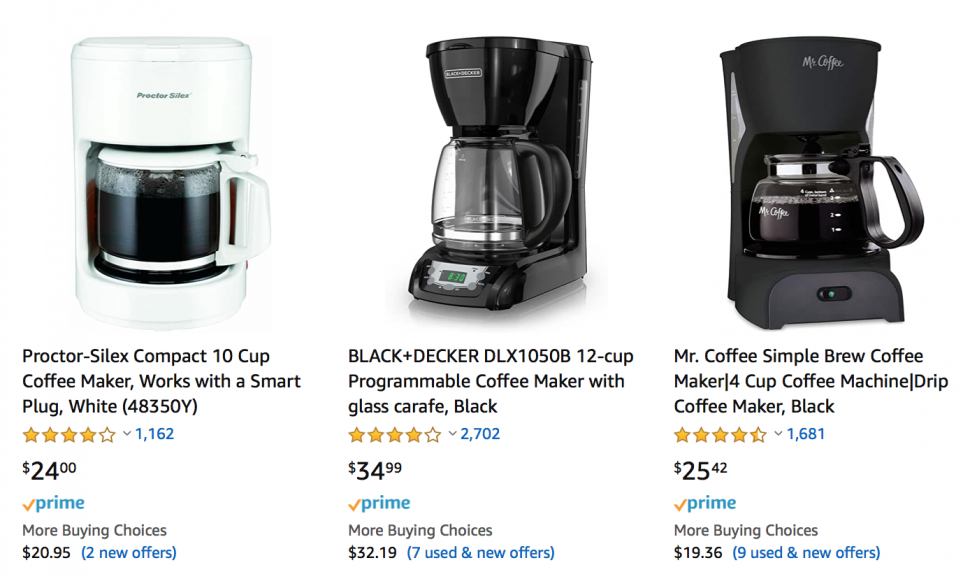
Or maybe you sell garden toolsets that don’t break the bank. How would you compare to similarly priced toolsets on the market?
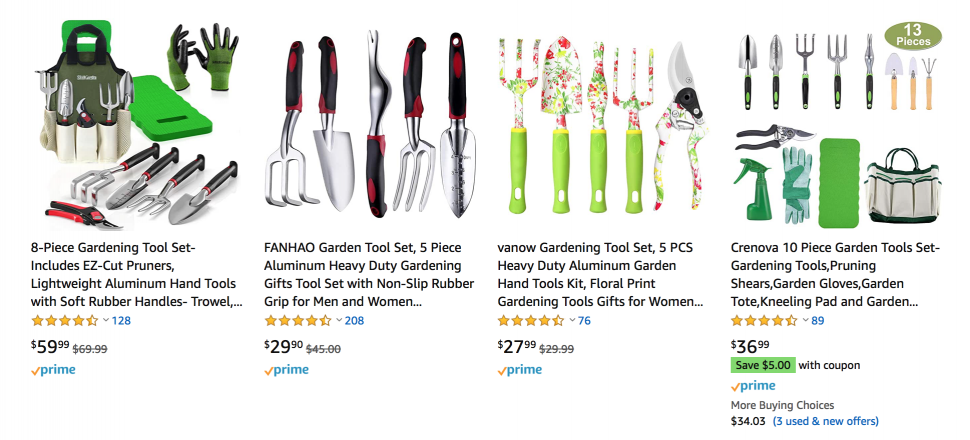
If you can price your products competitively without sacrificing quality, product pricing is a good angle to assume in your positioning strategy.
Product quality
Maybe you realize that your products are more high-end than others. Would you be better off aligning yourself with trusted quality brands and sticking to higher pricing?
Instead of the coffee brands listed above, are you more of a DeLonghi, Capresso, Ninja, or Keurig?
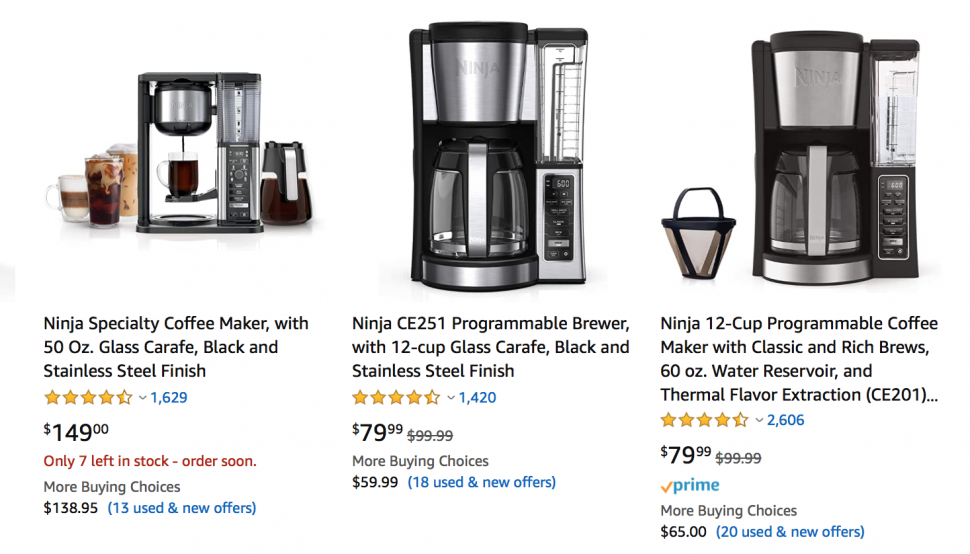
If you truly have a quality product on your hands and want to position it as such, go for it.
Product benefits
Instead of focusing on quality or competitive pricing, maybe you’re keen on customers knowing how convenient, useful, or beneficial your product is.
Is it indispensable for household organization, like easily assembled shelves?
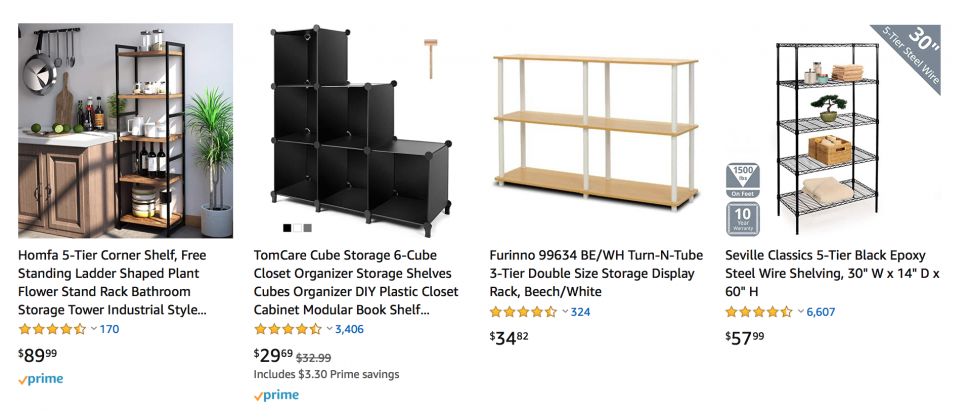
If that’s the case, you may want to align your brand with other convenience- and benefit-oriented products.
Uses and applications
If you sell a product with a specific and undeniable use, it could be smart to position your product alongside other super-useful things, like these couch armrest tables:
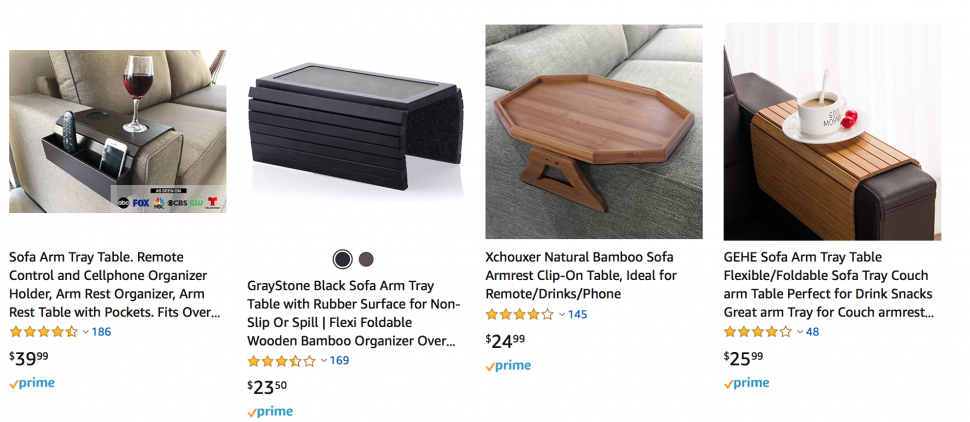
Or these popsicle molds to beat the summer heat with your kids:
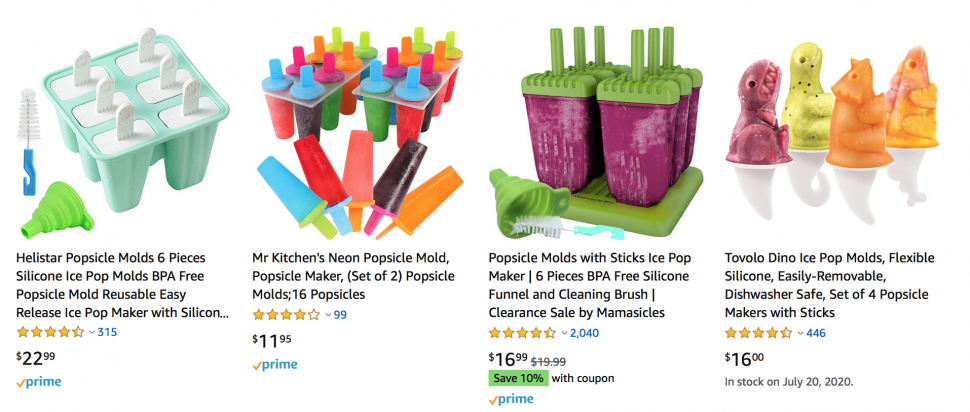
Or a bathtub organizer like the ones below. I literally just purchased the one in the middle because I’m so tired of stepping on squeaky ducks and frogs and bulky pirate ships in my bathtub and it’s so darn useful for that.
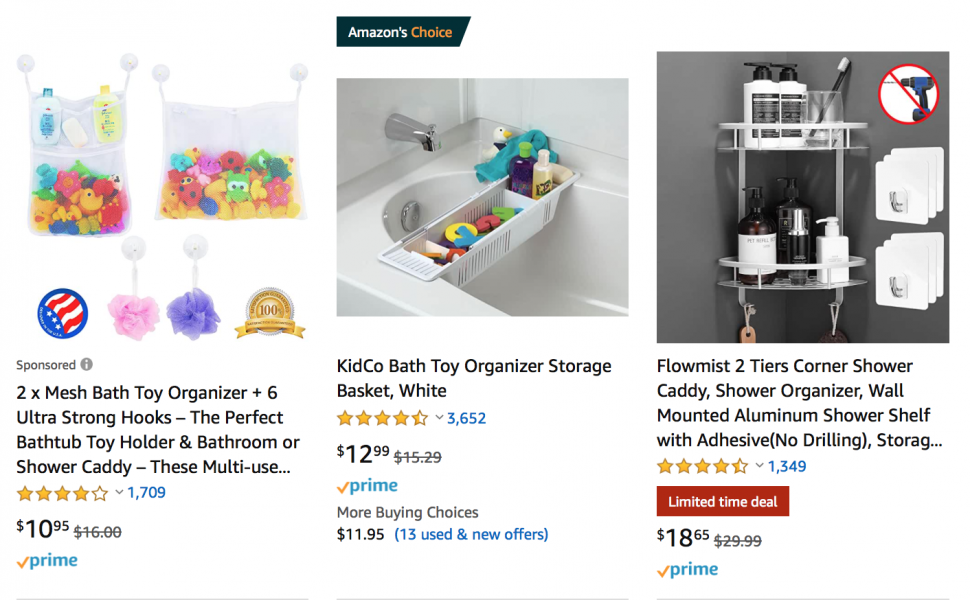
There’s a whole realm of gadgets and products that make life easier because they’re so useful.
Does yours fit in this category? If so, use it in your market positioning strategy.
Superiority to competitors
Some products and brands operate on the market positioning strategy that they’re better than their competitors.
It’s fun, honestly, to dig at competitors in a lighthearted yet powerful way. Think of the classic “Get a Mac” campaign that aired in the late 2000s.
When you look carefully at the ad, it’s a perfect example of using competitive market positioning.
Justin Long, who represents Apple, is hip, kind, and young. Stodgy John Hodgman plays the part of the PC. He is as drab as Long is cool.
He also resembles Bill Gates in the 66 famous ads — something Steve Jobs and his advertising team surely did on purpose.
These memorable ads mixed real advantages Mac had over PCs with friendly humor, and the results were exemplary. Mac sales, which had dropped in the early- to mid-2000s, surged again as a result of the ads.
If you’re ready to get competitive like the Mac team, this strategy might be for you.
Making a perceptual map
Once you’ve decided which market positioning angle fits best with your brand, it’s time to create a perceptual map.
A perceptual map is a two-dimensional graph featuring a horizontal and vertical axis. The two points on each axis represent one value or characteristic pitted against the other.
In the graph of cola competitors below, the vertical axis represents modern versus traditional. The horizontal axis represents high sugar taste versus low sugar taste.
Products belonging to Coke and its main competitor Pepsi are then plotted on this graph according to customer perceptions.
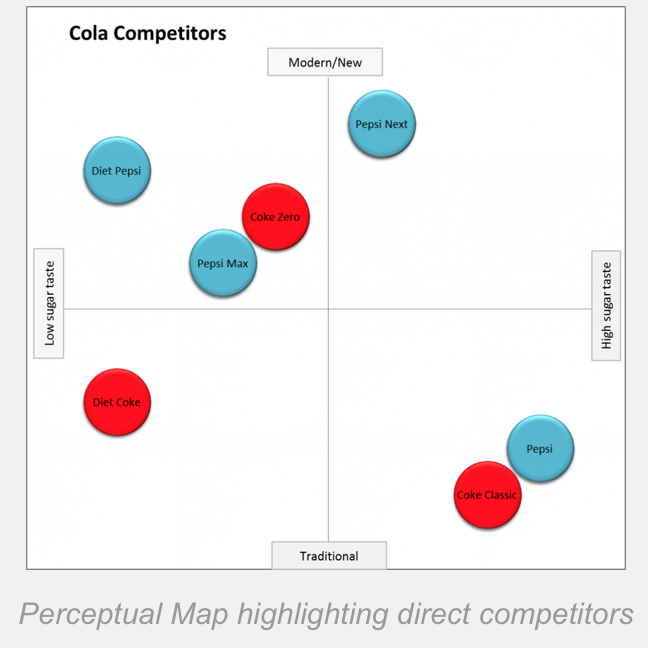
The key thing to remember here is that a perceptual map serves to help you visualize how your target market perceives your brand and its competitors. It’s not how you perceive your own business or even your own competition.
A perceptual map also helps you see where there’s an unmet need or desire that your product can fill.
So before creating your own perceptual map, study existing maps of your competitors. Then, look for any gaps or spaces on the map and ask yourself, can my brand fill this need?
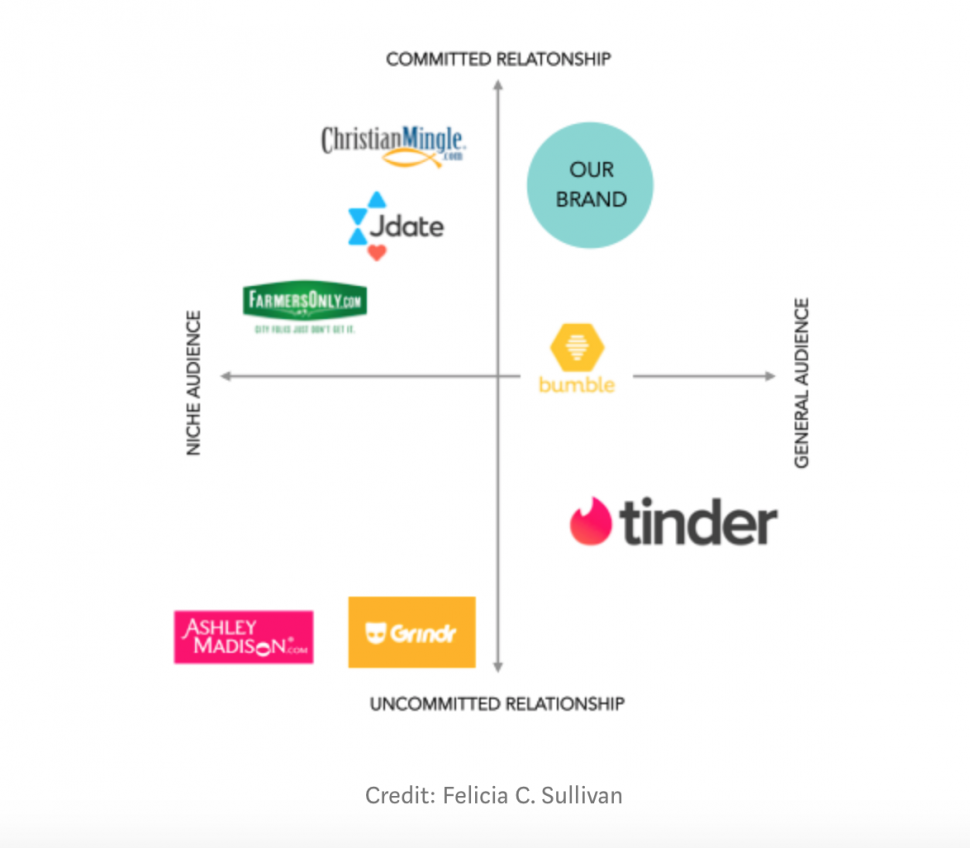
Consider these questions:
- When customers think of my brand, what words would they use to describe it?
- How do my customers feel when they think about my brand? What emotions would they list?
- What need does my brand fill in my customers’ lives?
Now, you’re in a good position to create your own perceptual map. See this helpful guide to perceptual mapping to get started.
Armed with information about your target audience’s perception of your brand and its competitors, you’re ready to head into the next phase of market positioning.
Building your market positioning strategy
Once you know the angle you’ll take and have crafted a perceptive map, it’s time to build your strategy. It should culminate in a market positioning statement that drives every market positioning choice you make.
Here are four simple steps.
1. Figure out what sets you apart from competitors
Your perceptual map can help you take an honest look at the differences between your brand and its competitors.
What strengths does your brand have, relative to competitors? What does it offer that another brand does not?
Once you figure that out, start looking for ways that your team can use these differences to your brand’s advantage. Apple, for example, figured out in the mid-2000s that it was sleek-looking, multi-
2. Determine your current market position
Where do you currently fit in your target market? What is your current position?
Use your perceptual map to determine this. If you want to reposition yourself, a perceptual map can help you visualize this change, too.
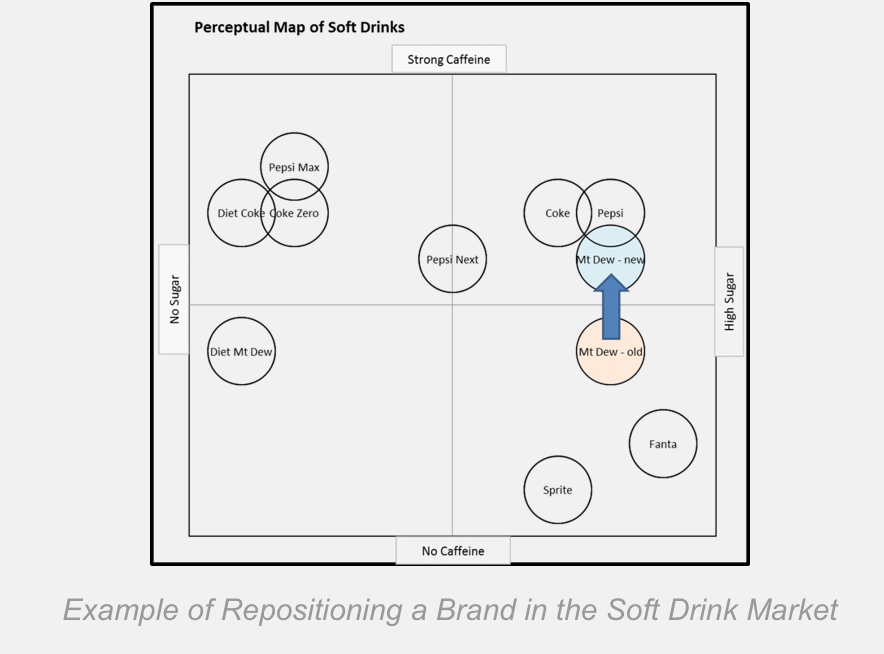
Only by knowing your current — or estimated — market position can you decide where and how to reposition your brand, and what benefits the new positioning will bring.
Related: Take a look at this brand audit for Coca-Cola that the PickFu team created.
3: Analyze competitors’ market positioning
In this step, you’ll figure out the state of your marketplace.
For a helpful guide to conducting a competitor analysis, check out this article from Myk Pono.
The main questions you’ll be asking and figuring out are the following:
- What is the overall client perception of your marketplace?
- Where do your competitors stand in relation to each other?
- What are their strengths and weaknesses?
- Are there any threats present in the marketplace, like dwindling demand for your brand’s services?
- What are the current prices for the products of brands like yours?
- And finally, how do your competitors influence your spot in the market and vice versa?
By figuring out what your competitors’ positioning looks like, you can build an informed market positioning strategy.
4. Craft your market positioning statement
Now that you have a handle on where you fit in with your competition, create your brand’s market positioning statement.
Think of your market positioning statement as the anchor of your entire strategy.
A market positioning statement does four things:
- Determine the target market
- Identify the market’s pain points
- Briefly outline how your brand fills that need
- Point out the traits that serve your customers better than competitors
This statement should be short, and it doesn’t have to be fancy. It’s an internal guide for you and your team.
Use this template to help you get started:
For [your target audience], [your brand] is the [your market] that best fulfills [your customer needs] because [your brand], and only [your brand], is/does [your evidence].
Here are a few examples using this formula:
For tech-loving consumers, Apple is the Big Tech technology company that best fulfills your desire for a high-end computer, phone, and laptop experience because Apple, and only Apple, sources the highest-quality products and offers a frustration-free consumer experience.
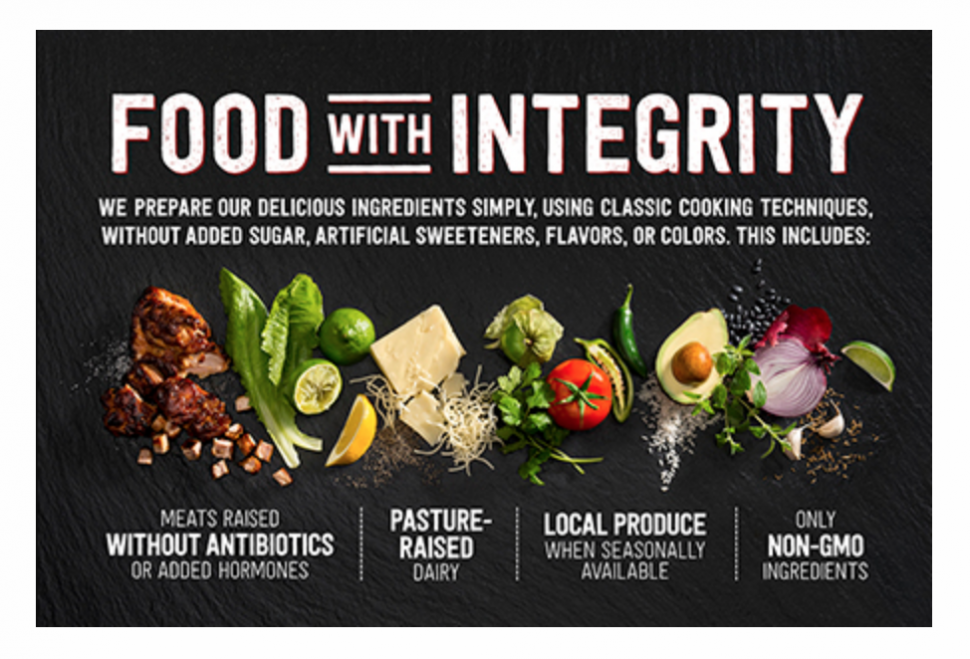
For customers who want fast yet nutritious food, Chipotle is the fast-casual dining experience that best fulfills your desire for fresh, ethically sourced ingredients because Chipotle, and only Chipotle, commits itself to
Tinker with your statement until it best reflects your brand’s values and goals as they relate to market positioning.
Then post it somewhere that you and your team can see it every day.
How to use PickFu for market positioning
PickFu is a market research tool that can help you figure out where your brand sits in your target market. With PickFu, you can poll a ready-made group of panelists that are important to your brand.

The panelists, or respondents, give you honest votes and written feedback to help you understand your target market’s perception and provide market validation for your product.
You can even use PickFu to test your brand or product against your competitors’.
Competitive polls
The easiest way to do this is to take a screenshot of your competitions’ product and/or product listing and pit it against yours in a PickFu poll.
The key here is to not tell respondents which one is which. Simply ask them, “Which listing would you more likely click on?” or “Which product would you rather buy?”
Here’s how PickFu users have done it in recent polls.
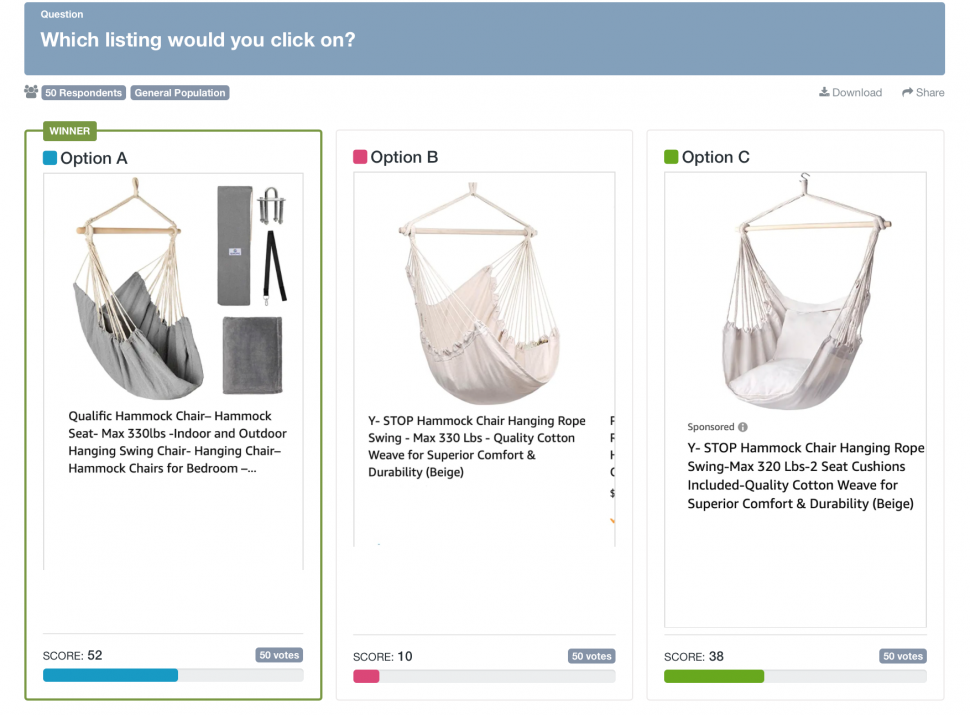
In this poll comparing hammock chairs, the PickFu user simply asked respondents which listing they’d click on.
The choices are three screenshots from Amazon. We don’t know which listing is the PickFu
Option A’s screenshot won by a decent margin, so whether it’s the PickFu user’s hammock or the competition’s, it’s crucial to pay attention to the why.
Here’s what respondents had to say:
“[Option] A gives me a good look at all the nifty goodies that come to purchasers of this hammock chair. The other 2? Nope! They just look like loaded diapers hanging from a bunch of strings”
Oddly enough, this respondent wasn’t the only one to comment that Options B and C resembled diapers. Woe to whoever posted that listing!
Another respondent wrote: “I really prefer [Option] A strongly. I’m drawn to this one for both the photos and what the listing says. The photos seem to show what’s included and let you know there’s going to be some putting it together. It also….tells me up front where I can use it.”
If the PickFu user’s product is represented in Option A, the brand is in a good position. But if their listing is either Options B or C, they’ve got some work to do.
Aspects of your brand that you can test with PickFu
You, too, can increase your understanding of your market position by using PickFu to compare your brand to competitors. And you’re not limited to Amazon product listing screenshots, either. Try PickFu for comparing any of the following:
To get the most accurate results, tailor your poll’s target audience to reflect your ideal consumer.
PickFu offers specific demographic groups, such as:
- Dog owners
- Coffee drinkers
- App
Store users - Audiobook listeners
- Fiction readers
- Podcast listeners
- Small business owners
- Parents
- And much more
Using a range of strategies to collect feedback from your audience such as surveys, email questionnaires, PickFu polls, and more can help your brand excel in its market position — and therefore succeed in the business world.
Create your first PickFu poll today
It’s easy and inexpensive to conduct market positioning research using PickFu. Polls start at just $50 and take as little as 15 minutes to complete.
Create your first poll today and get started on a journey to understanding where you stand in your market, and how you can improve your current position.



